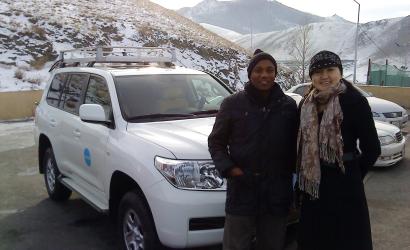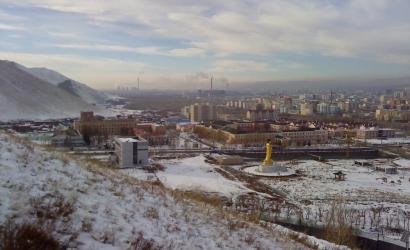Mongolia
Mongolia is one of the most disaster-prone countries in the world, susceptible to ‘dzuds’, dust storms, droughts, floods, wildfires and earthquakes. Dzuds (which are severe winter colds and/or heavy snow associated with large-scale livestock losses), droughts and fires have caused catastrophic damage in Mongolia over the past decade due to their complex interaction with ecosystems and livelihoods.
While the ETC is not formally activated in Mongolia, the cluster is supporting UNICEF in Mongolia in its role as cluster lead, alongside government stakeholders and the humanitarian community. ETC preparedness efforts in Mongolia aims to support gaps and needs in information and communication technologies for at-risk communities.
The ETC conducted a mission to Mongolia from 28 July to 10 August 2021 (see report) to support country preparedness efforts with an aim to plan for and produce an Emergency Telecommunications Checklist, gather and consolidate partnerships with relevant stakeholders, support the local ICT Working Group, leverage the ETC’s global partnerships and assess and improve existing key communications channels, such as early warning systems.
In April 2022, the ETC facilitated an Emergency Telecommunications Simulation Exercise with Mongolia Government stakeholders. The report can be read here.
ICT Profile
National Emergency Management Authority (NEMA)
Communications and Information Technology Authority
Communications Regulatory Commission
3,225,166 million
The country’s geographic terrain can be divided into 4 distinct zones: a forest-steppe zone, a steppe zone, a desert steppe and a desert zones. The country is surrounded by high mountain ranges and the forest-steppe zone in the Western and Central regions, while the steppe zone is located in the East and the Gobi Desert in found in the South. The country experiences a harsh continental climate characterised by long and cold winters and by dry and hot summers. It has 4 distinct seasons, however strong fluctuations in temperature and precipitation occur across its various locations. In the Northern mountainous regions and around the capital city Ulaanbaatar, annual average temperatures range from -22°C (January) to 17°C (July), while in the Central steppes temperatures are warmer, ranging from -15°C to 21°C. The warmest regions are located in the South Eastern Gobi Desert. Annual mean precipitation shows a gradient from North to South: 300 to 400 mm in the Northern and Central mountainous regions, 150 to 250 mm in the steppe zones ranges and only 50 to 100 mm in the Gobi Desert part. Nearly 85% of the total annual precipitation falls between April and September.
Source: United Nations ESCAP 2020
Mongolian tögrög
2.8 (low risk)
Source: INFORM Risk 2021
+976
.mn
230V, 50Hz; Plug: Types C and E
Local UN/NGO ICT WG in place - No (in progress)
Communicating with Communities (CWC) WG in place - Yes (active)
The need for transportation improvements in Mongolia is well recognised, and the government has focused resources and expended considerable political will on building roads and rail links, and in developing the new international airport. Currently, connections are not efficient, warehousing is not sufficient, and goods move slowly due to a lack of proper systems and because of various choke points at ports and other transfer zones. This may be one of the country’s most pressing challenges, as the lack of efficient logistics threatens to keep the cost of imported goods high and exports uncompetitive, despite heavy investment in transportation.
Source: Oxford Business Group
11
Source: ITU 2019
4.42 million
Source: DataReportal 2020
317,317
Source: ITU 2019
137
Source: ITU 2019
58
Source: GSMA Intelligence 2019
95%
Source: GSMA Intelligence 2019
The purpose of this law is to organize disaster protection activities promptly and effectively, and to regulate relations related to the emergency organization and disaster management system, organization and activities.
The purpose of this law is to regulate relations between State organisations, service providers, business entities and individuals engaged in telecommunications and the creation, utilisation and protection of the telecommunications network and telecommunications services in Mongolia.
A multilateral treaty governing the provision and availability of communications equipment during disaster relief operations, particularly as regards the transport of radio and related equipment over international boundaries. Mongolia signed the Convention on 18 June 1998.
There are active drone regulation laws in Mongolia.
Early warning systems are in place for monitoring natural hazards (such as drought) hazards. Initiatives are typically funded through bilateral aid, and supported by the UN and development banks, in the custody of national counterparts.

